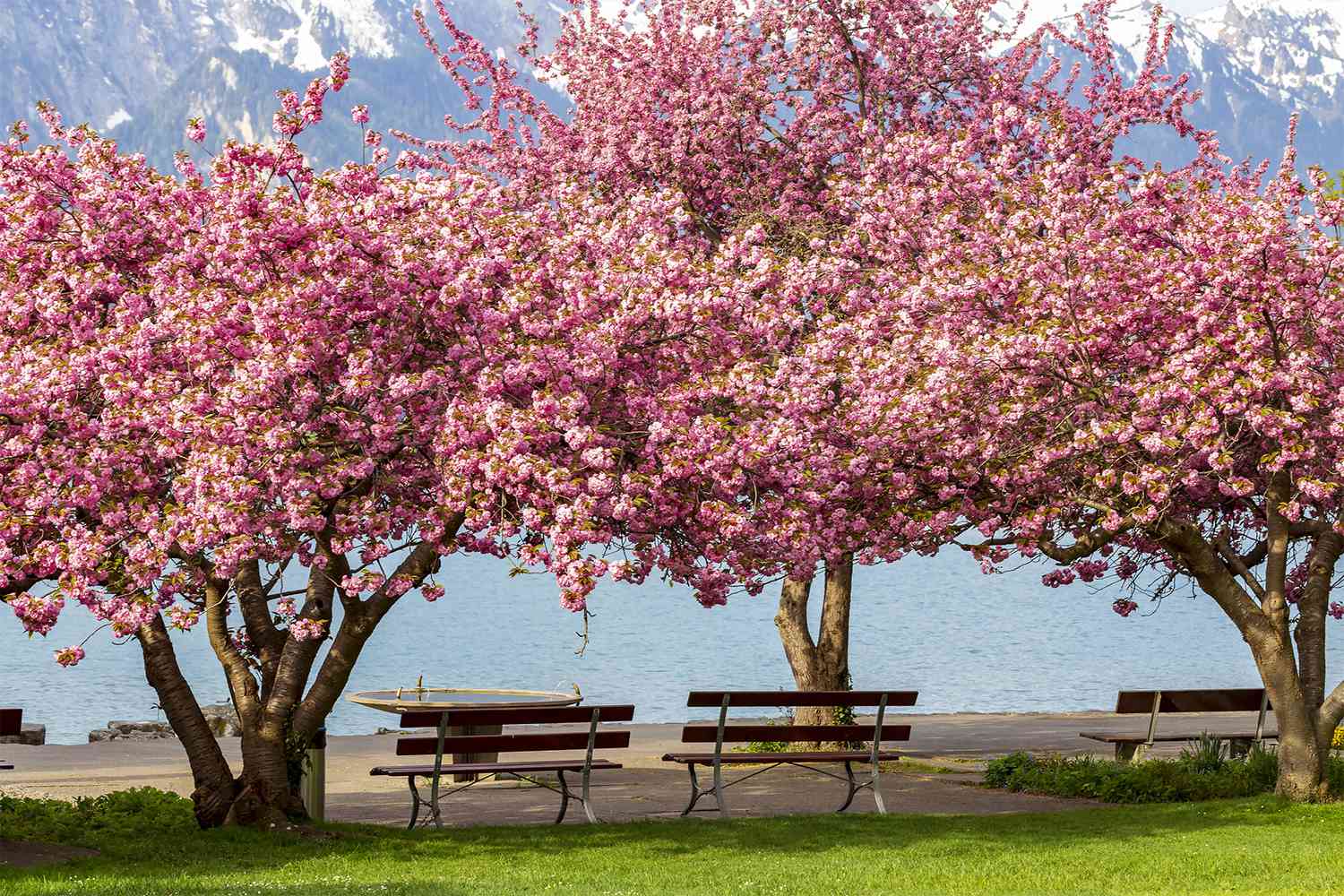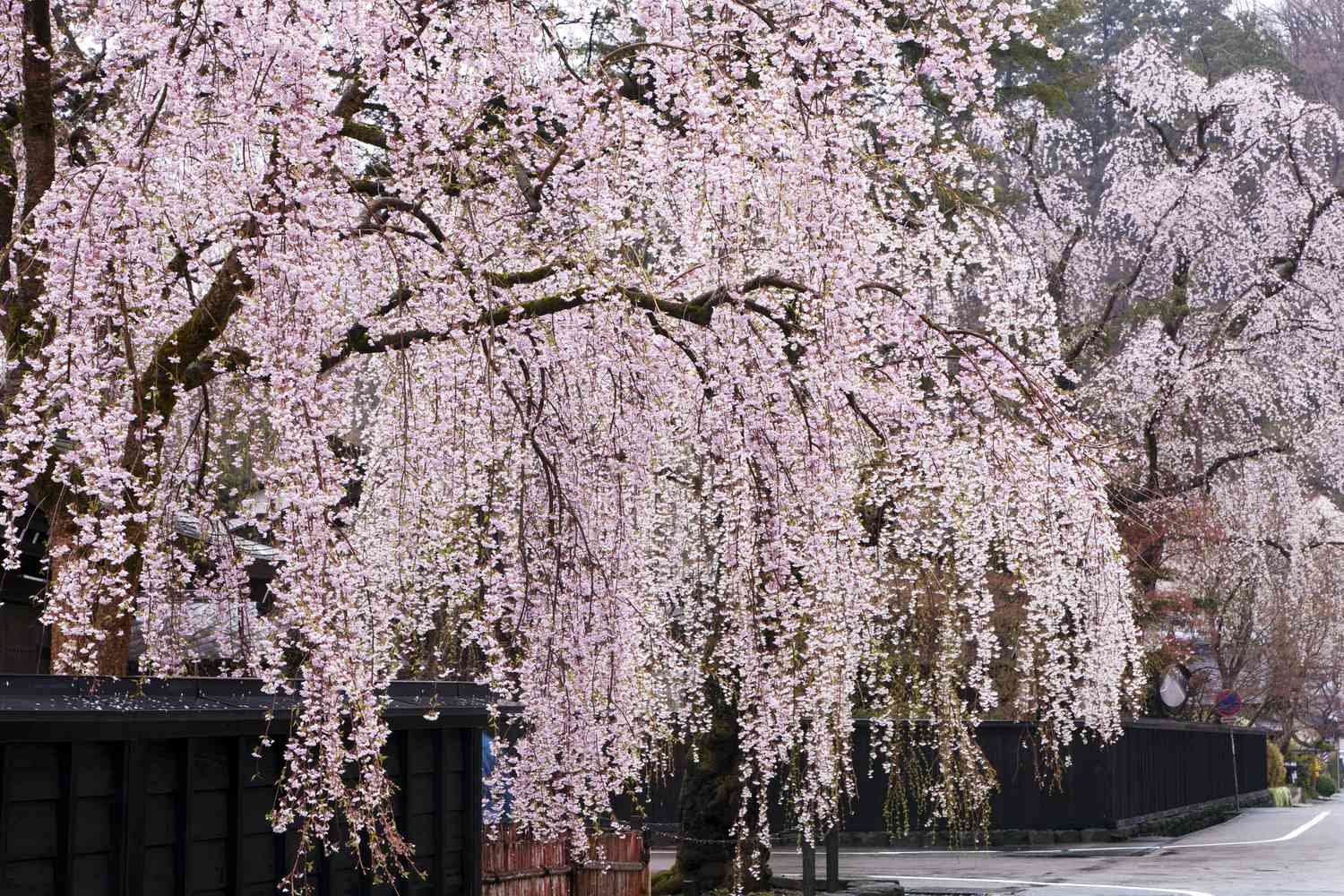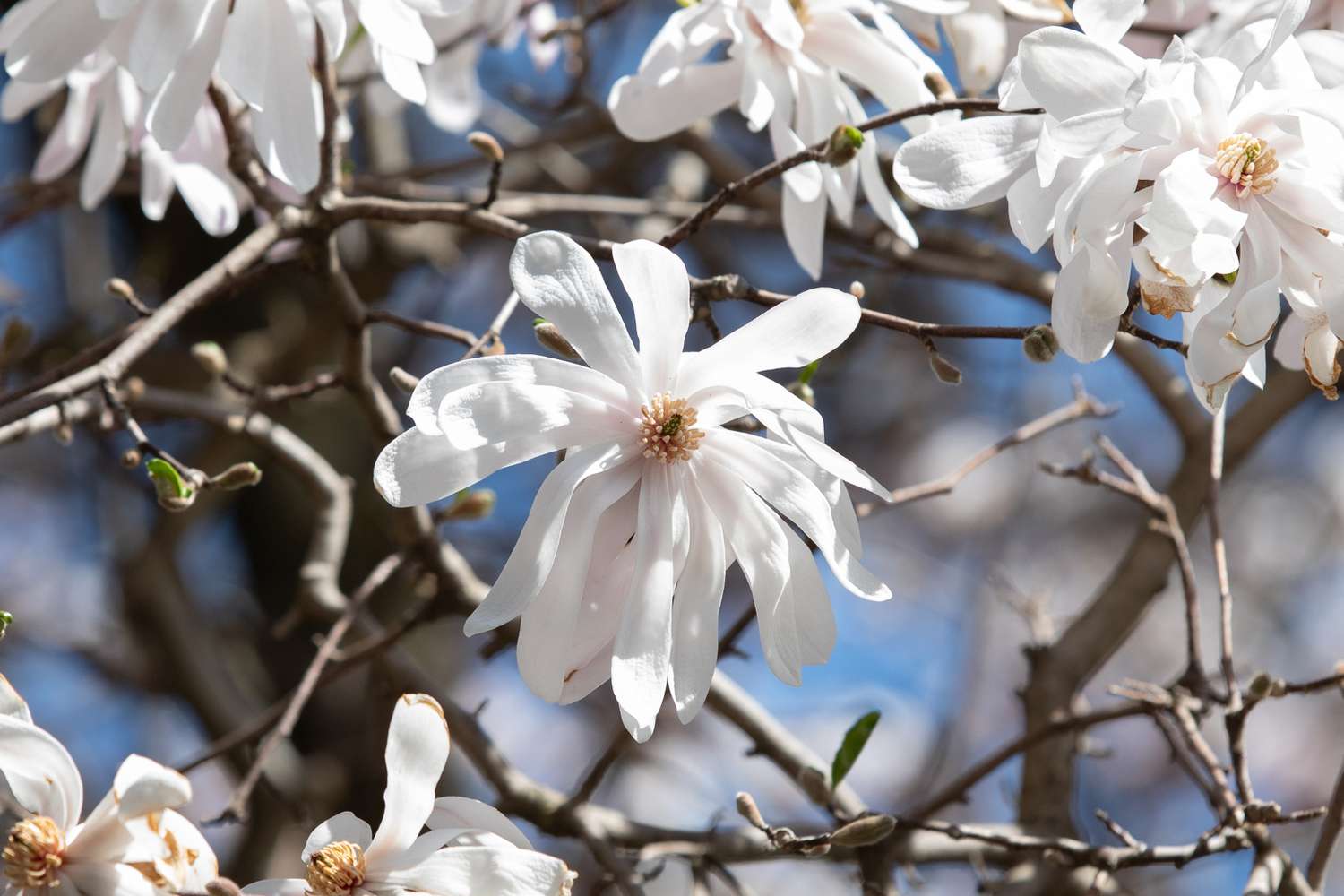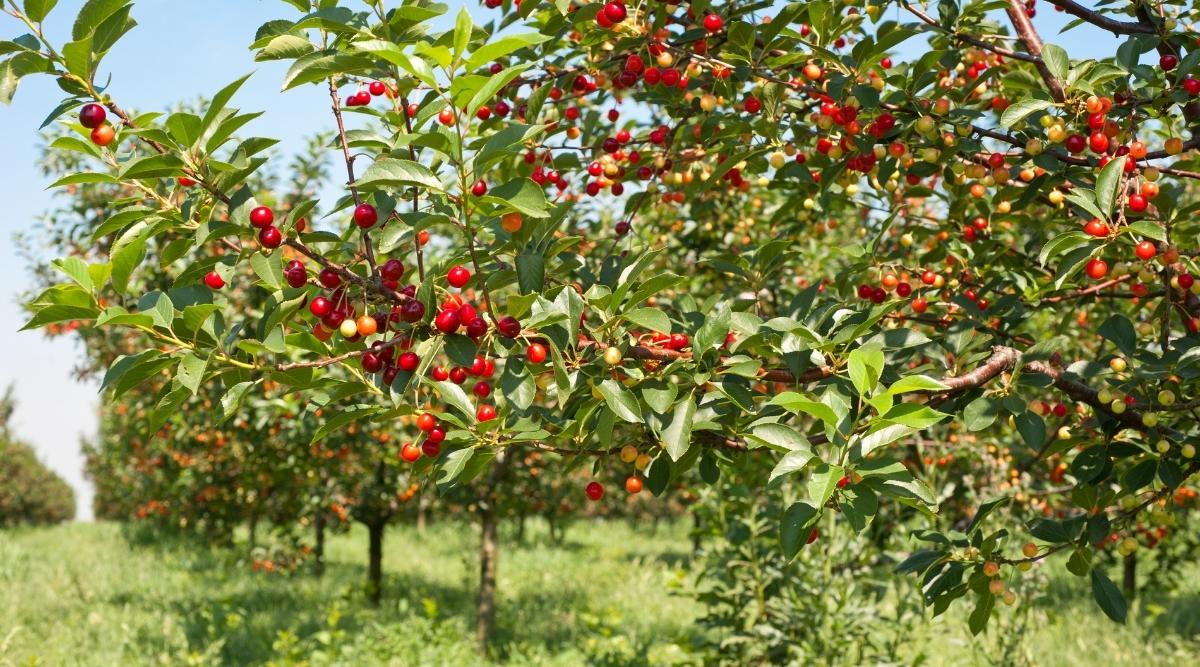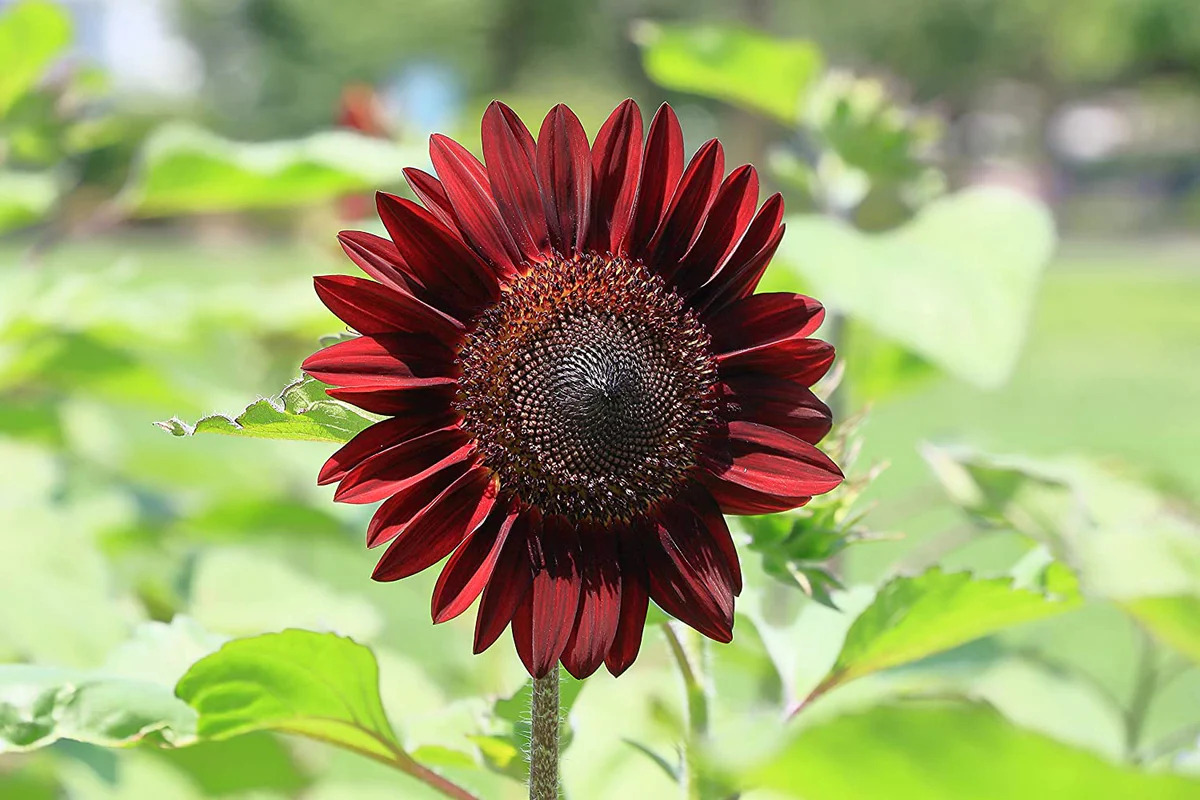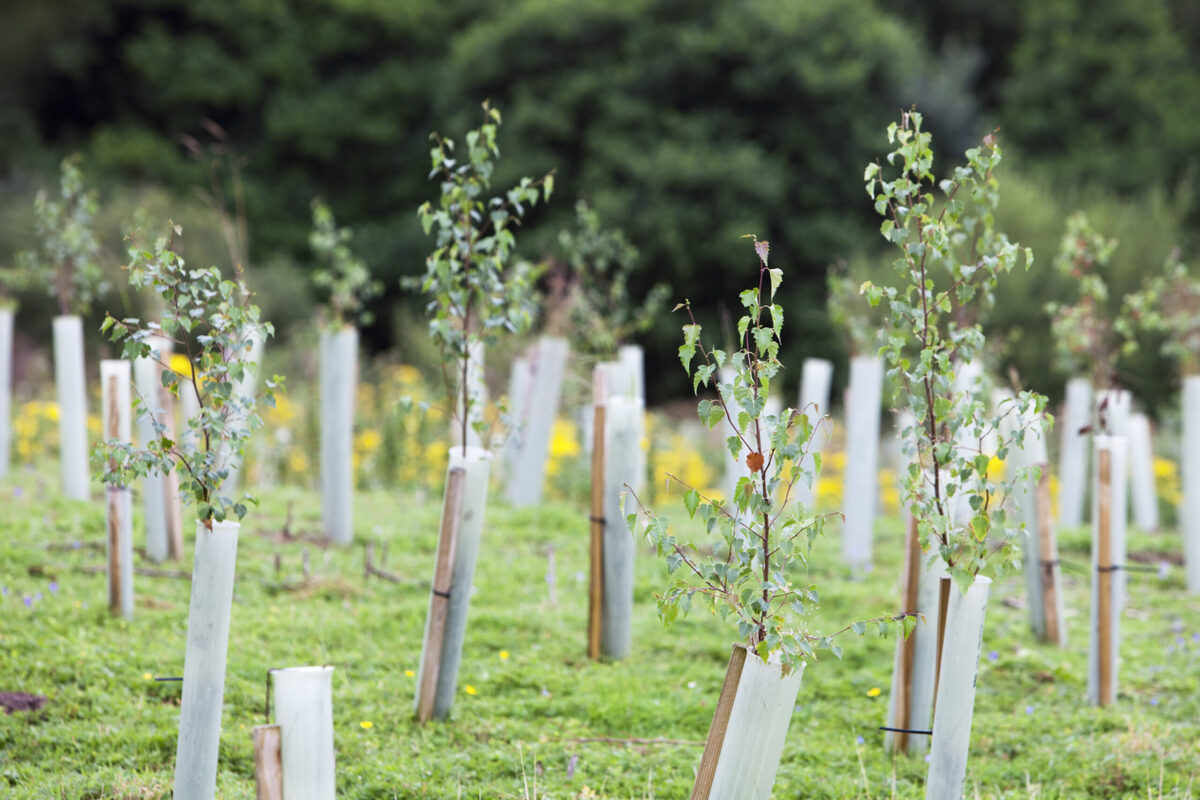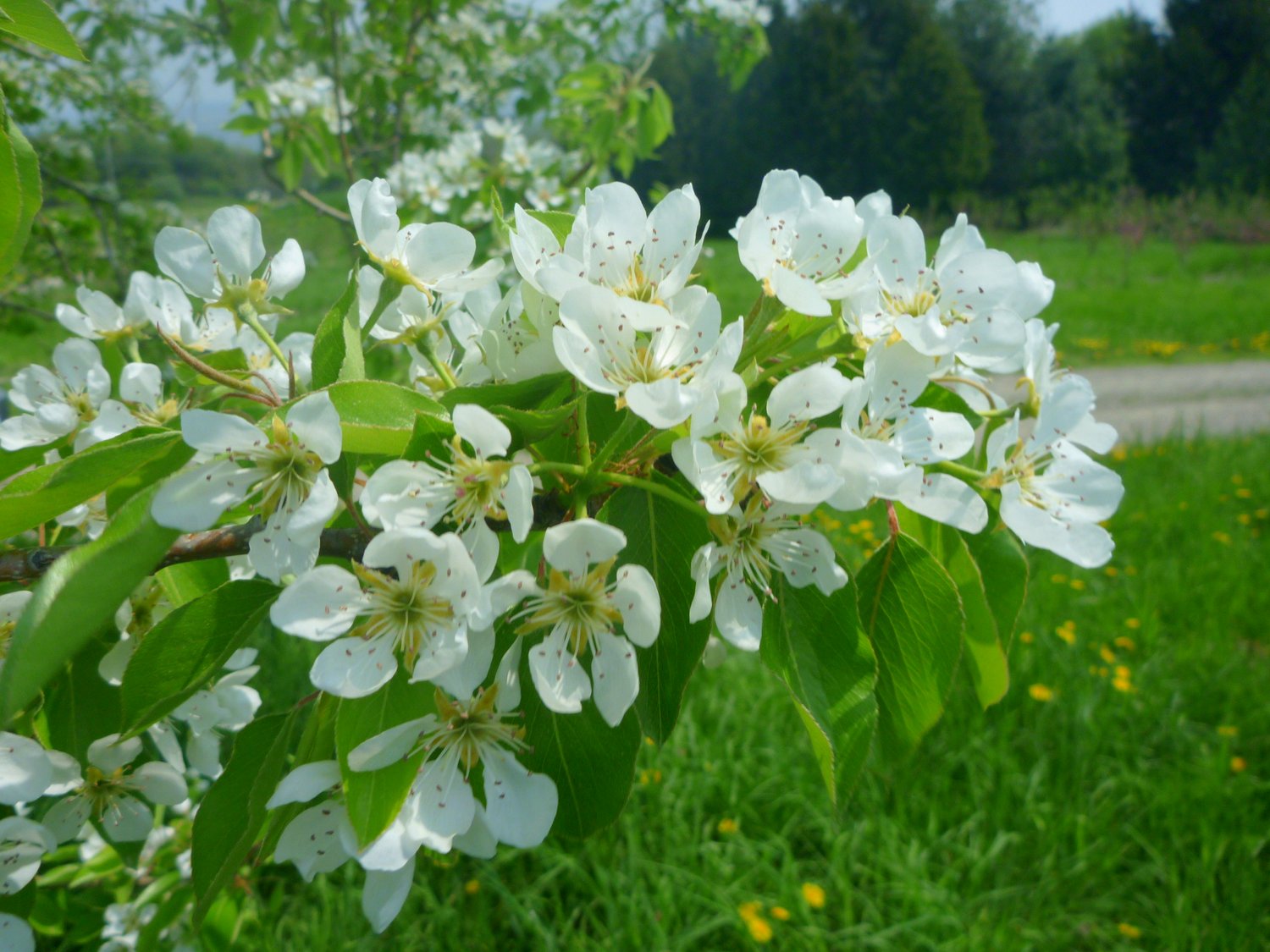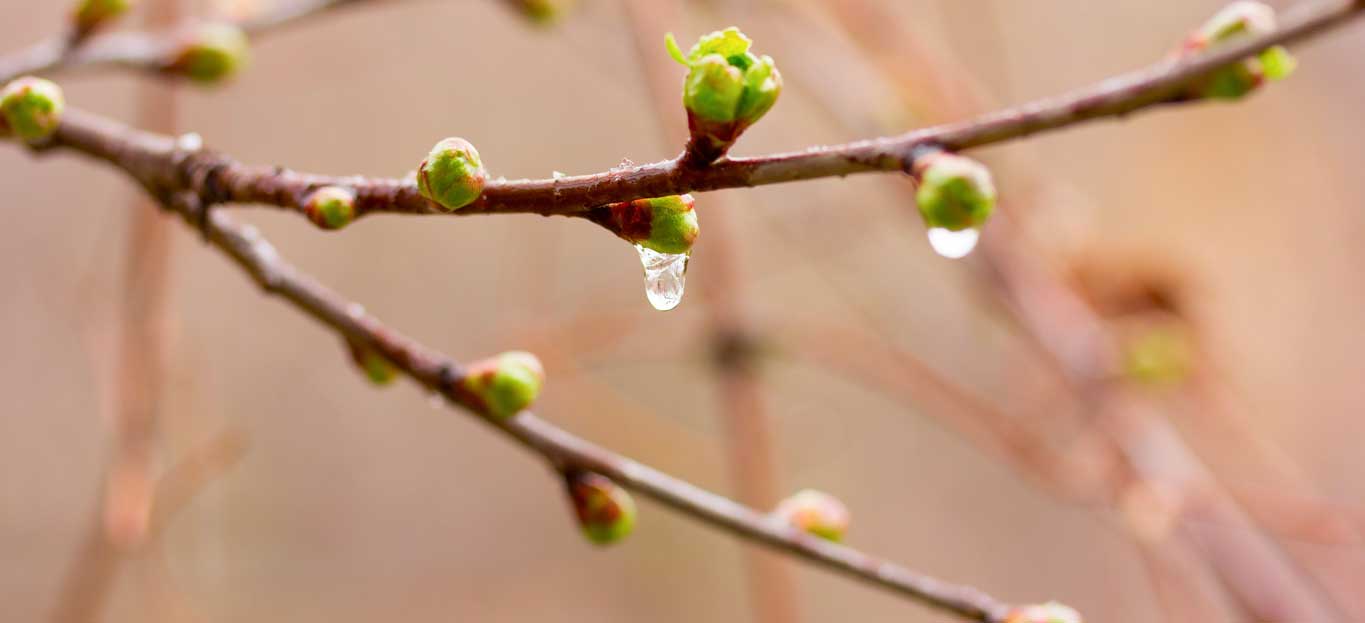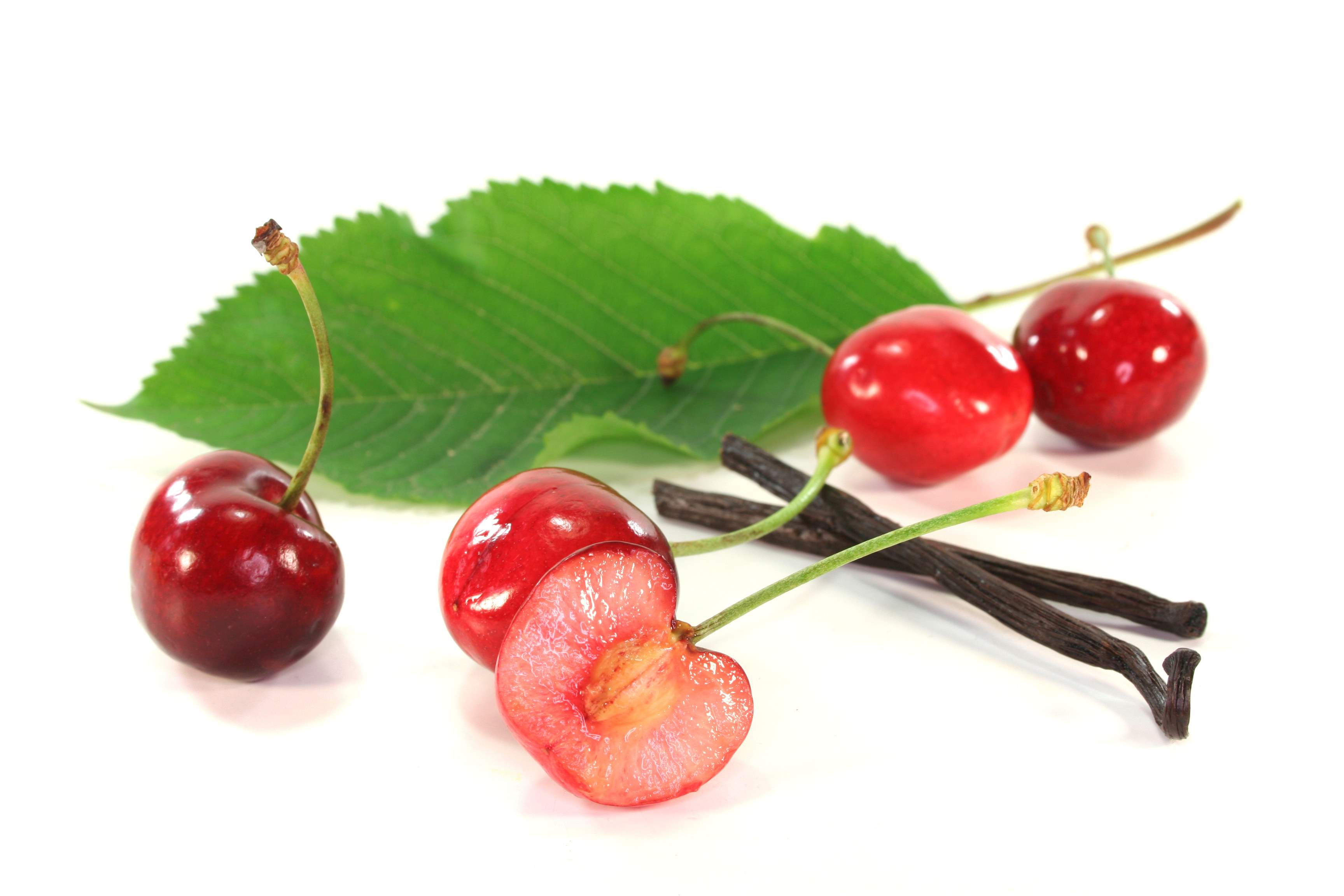Home>Types of Gardening>Edible Gardening>When Do The Cherry Trees Blossom In Washington Dc


Edible Gardening
When Do The Cherry Trees Blossom In Washington Dc
Modified: January 22, 2024
Discover the perfect time to see cherry trees blossom in Washington DC with our guide to edible gardening. Plan your visit for the most beautiful blooms!
(Many of the links in this article redirect to a specific reviewed product. Your purchase of these products through affiliate links helps to generate commission for Chicagolandgardening.com, at no extra cost. Learn more)
Table of Contents
- Introduction
- History of the Cherry Blossom Trees in Washington DC
- The Significance of Cherry Blossom Trees in Japanese Culture
- The National Cherry Blossom Festival
- Factors that Affect the Timing of Cherry Blossom Blooming
- Average Bloom Dates of Cherry Trees in Washington DC
- Best Viewing Spots for Cherry Blossom Trees in Washington DC
- Tips for Planning a Visit to See the Cherry Blossoms
- Conclusion
Introduction
Washington DC, the capital of the United States, is famous for its magnificent cherry blossom trees that paint the city in a sea of delicate pink and white petals every spring. This natural spectacle attracts visitors from all over the world, eager to witness the breathtaking beauty and ephemeral nature of the cherry blossoms.
The cherry blossom trees in Washington DC are not only a symbol of beauty and tranquility but also hold deep cultural and historical significance. These trees were gifted to the city by the Mayor of Tokyo, Yukio Ozaki, in 1912 as a gesture of friendship between the United States and Japan. Since then, the cherry blossoms have become an integral part of the city’s landscape, attracting millions of visitors each year.
Walking among the flowering cherry trees is a truly magical experience. The delicate petals gently falling like confetti, the intoxicating fragrance that fills the air, and the vibrant colors that burst forth from the branches create a captivating ambiance. It’s no wonder that the cherry blossoms in Washington DC have become a cherished tradition and a symbol of hope and renewal.
Not only are the cherry blossoms visually breathtaking, but they also hold deep cultural significance in Japanese culture. In Japan, cherry blossoms, known as “sakura,” symbolize the transient nature of life and the impermanence of beauty. The arrival of cherry blossoms signals the onset of spring, a time of new beginnings and the celebration of life’s fleeting moments.
History of the Cherry Blossom Trees in Washington DC
The beautiful cherry blossom trees that grace the streets of Washington DC have a fascinating history. The idea of planting cherry trees in the nation’s capital can be traced back to the early 20th century. In 1912, Mayor Yukio Ozaki of Tokyo gifted over 3,000 cherry trees to the city as a symbol of peace and friendship between the United States and Japan.
The initiative to plant these trees was led by First Lady Helen Herron Taft and Viscountess Chinda, the wife of the Japanese ambassador. On March 27, 1912, the first two cherry trees were planted near the Tidal Basin. Over the years, more trees were planted, expanding the beautiful cherry blossom display across the city.
Unfortunately, the early batch of trees was infested with insects and had to be destroyed to protect the local environment. In 1915, the city of Tokyo generously gifted another 3,020 cherry trees to replace the ones that were lost. Since then, the cherry blossom trees have thrived in the capital, adding charm and beauty to the cityscape.
During World War II, the cherry blossom celebrations were paused due to tensions between the United States and Japan. However, once the war ended, the tradition was revived, and the National Cherry Blossom Festival was established in 1947. This annual festival celebrates the blooming of the cherry blossoms and has become a highly anticipated event in Washington DC’s cultural calendar.
The cherry blossom trees in Washington DC serve as a lasting reminder of the enduring bond between the United States and Japan. They represent the values of friendship, peace, and cultural exchange. Today, these trees stand as a symbol of the strong diplomatic ties between the two nations and are a cherished part of the city’s heritage.
The Significance of Cherry Blossom Trees in Japanese Culture
The cherry blossom trees, known as “sakura,” hold deep cultural significance in Japanese society. These enchanting trees symbolize various aspects of Japanese culture, including beauty, transience, and the cycle of life.
In Japan, cherry blossoms have long been appreciated for their ephemeral nature. The blossoms only last for a short period, usually around one to two weeks, before the petals fall gracefully to the ground. This fleeting beauty is seen as a metaphor for the transient nature of life and the reminder that everything is impermanent. The Japanese concept of “mono no aware,” which translates to the sensitivity to the beauty of transient things, is often associated with cherry blossoms.
Cherry blossoms have been a prominent motif in Japanese literature, poetry, and art for centuries. The practice of “hanami,” which translates to “flower viewing,” is deeply rooted in Japanese culture. During spring, people gather under blooming cherry trees for picnics, celebrations, and contemplation. It’s a time when families, friends, and even strangers come together to appreciate the beauty of the cherry blossoms and enjoy the fleeting moments of their full bloom.
The arrival of cherry blossoms is eagerly anticipated throughout Japan, and there are even cherry blossom forecasts provided by weather agencies to help people plan their hanami gatherings. The blooming of cherry blossoms is an integral part of Japanese culture and serves as a symbol of renewal, hope, and the arrival of spring.
Cherry blossoms also hold significance in Japanese religion and mythology. In Shinto, the indigenous religion of Japan, cherry blossoms are considered sacred flowers. They are often associated with the Shinto goddess of rice, Konohanasakuya-hime, who is believed to be the embodiment of the cherry blossom itself. The blooming of cherry blossoms is seen as a divine blessing and a sign of prosperity.
Throughout history, cherry blossoms have been used as a symbol of the samurai warrior’s ethos, representing the transient nature of life and the willingness to sacrifice oneself for a greater cause. The image of cherry blossoms falling like petals in the wind has been associated with the fleeting nature of a warrior’s life and the beauty found in courage and honor.
Overall, the cherry blossom trees hold immense cultural and spiritual significance in Japanese society. They not only captivate the senses with their delicate beauty but also serve as a powerful reminder of the impermanence of life and the importance of cherishing each passing moment.
The National Cherry Blossom Festival
The National Cherry Blossom Festival is a vibrant and cherished event that takes place annually in Washington DC to celebrate the blooming of the cherry blossom trees. This iconic festival attracts millions of visitors from across the globe and showcases the rich cultural heritage of both Japan and the United States.
The festival originated in 1912 as a small ceremony to commemorate the gift of cherry trees from the Mayor of Tokyo to the city of Washington DC. Over the years, it has evolved into a grand celebration that spans several weeks in March and April.
The National Cherry Blossom Festival features a wide range of activities and events that cater to people of all ages and interests. The festival kicks off with the Opening Ceremony, which includes traditional Japanese music and dance performances, as well as the lighting of the lanterns to mark the beginning of the festivities.
One of the highlights of the festival is the daily performances at the Tidal Basin Stage, where visitors can enjoy live music, cultural demonstrations, and performances by both local and international artists. These performances showcase the diversity and beauty of Japanese arts and culture, including taiko drumming, traditional dance, and martial arts demonstrations.
The festival also includes the beloved Cherry Blossom Parade, a grand procession featuring colorful floats, marching bands, and cultural performances that wind their way through the streets of Washington DC. This lively parade attracts thousands of spectators and is a true spectacle of artistry and creativity.
Another popular event during the festival is the Blossom Kite Festival, where participants showcase their creativity by flying kites of various shapes and sizes in the sky. This event is not only visually captivating but also a symbol of freedom and joy.
Moreover, the festival offers opportunities for visitors to immerse themselves in Japanese culture through interactive workshops, tea ceremonies, traditional crafts, and culinary experiences. This provides a unique and enriching experience for those seeking a deeper understanding of Japanese traditions and customs.
The National Cherry Blossom Festival concludes with the Petalpalooza, a grand fireworks display over the Tidal Basin. This mesmerizing spectacle lights up the night sky in a burst of colors, serving as a grand finale to the festival and bidding farewell to the cherry blossoms for another year.
The National Cherry Blossom Festival is not just a celebration of nature’s beauty but also a testament to the strong bond between the United States and Japan. It serves as a platform for cultural exchange and appreciation, promoting friendship and understanding among people from different backgrounds and cultures.
Factors that Affect the Timing of Cherry Blossom Blooming
The blooming of cherry blossom trees is a highly anticipated event, but the timing can vary from year to year. Several factors influence when the cherry blossoms will reach their peak bloom, creating a captivating display of delicate petals. Here are some of the key factors that affect the timing of cherry blossom blooming:
- Temperature: Temperature plays a crucial role in determining when cherry blossoms will bloom. Warmer temperatures in early spring can trigger an earlier and faster bloom, while cooler temperatures may delay the blooming process.
- Winter Chill Hours: Cherry blossom trees require a period of dormancy during the winter months. A sufficient number of chill hours, which are hours when the temperature is below a certain threshold, are necessary for the cherry blossoms to bloom properly.
- Daylight: The length of daylight also influences the blooming of cherry blossoms. As the days become longer in spring, it signals to the trees that it is time to awaken from their winter slumber and begin the blooming process.
- Weather Patterns: Unpredictable weather patterns, such as cold snaps or late-season freezes, can have a significant impact on the timing of cherry blossom blooming. Sudden drops in temperature can delay the blooming or even cause damage to the delicate blossoms.
- Tree Variety: Different varieties of cherry trees have different blooming times. Some varieties bloom earlier in the season, while others bloom later. This diversity of blooming times adds depth and variety to the cherry blossom season.
- Climate Change: Climate change has been shown to impact the timing of cherry blossom blooming. Rising global temperatures can lead to earlier blooming times, disrupting the delicate balance of nature and potentially affecting the synchronization of cherry blossoms with their natural pollinators.
It’s important to note that while these factors play a significant role in influencing the timing of cherry blossom blooming, they can vary each year. As such, it can be challenging to predict the exact peak bloom dates with complete accuracy.
The National Park Service closely monitors the development of cherry blossoms and provides updates on the predicted peak bloom. These estimates are based on historical data, current weather conditions, and the overall health of the trees.
Despite the uncertainty surrounding the timing of cherry blossom blooming, the beauty and charm of these delicate flowers continue to captivate and inspire visitors from around the world. Whether the bloom arrives early or late, the arrival of cherry blossoms is always a cause for celebration and a symbol of the arrival of spring.
Average Bloom Dates of Cherry Trees in Washington DC
Each year, people eagerly anticipate the blooming of cherry blossom trees in Washington DC, turning the city into a mesmerizing sea of delicate pink and white petals. While the exact bloom dates can vary depending on various factors, historical data provides a general idea of when to expect the peak bloom of the cherry trees.
The average bloom period for the cherry blossoms in Washington DC typically occurs between late March and early April. However, it’s important to note that this timeframe is influenced by weather patterns, and slight variations can occur from year to year.
The prediction of the peak bloom date is based on the stage of development of the cherry trees and historical records of bloom dates. The National Park Service closely monitors the trees and provides updates as the bloom approaches.
On average, the cherry blossoms reach their peak bloom approximately four to seven days after the “indicator tree,” which is the Yoshino cherry tree located at the Tidal Basin, reaches its first stage of bloom. Once the indicator tree starts to show its first blossoms, it signals the beginning of the cherry blossom season.
In recent years, the peak bloom of the cherry blossoms in Washington DC has occurred earlier than usual. This can be attributed to warmer temperatures and climate change impacting the timing of the bloom.
It’s important to plan your visit to see the cherry blossoms based on the projected peak bloom dates. This information allows you to time your visit to witness the trees in their full splendor when the majority of the blossoms have opened. The peak bloom is a magical sight, as it showcases the trees at their most vibrant and picturesque state.
Additionally, it’s worth noting that the cherry blossom season can be fleeting. The blooms typically last for about a week, although weather conditions can influence their duration. Therefore, it’s essential to plan your visit accordingly to maximize your chances of experiencing the peak bloom and enjoying the full beauty of the cherry blossoms.
While the average bloom dates serve as a helpful guideline, nature has its own way of surprising us. It’s always advisable to stay updated with the latest information from the National Park Service and local authorities to ensure an optimal viewing experience of the magnificent cherry blossoms in Washington DC.
Best Viewing Spots for Cherry Blossom Trees in Washington DC
When the cherry blossoms reach their peak bloom in Washington DC, it’s a sight to behold. The city transforms into a breathtaking landscape of pink and white petals, creating picturesque scenes at various locations. If you’re planning a visit to see the cherry blossoms, here are some of the best viewing spots in Washington DC:
- Tidal Basin: The Tidal Basin is the epicenter of cherry blossom viewing in Washington DC. The area is lined with hundreds of cherry trees, creating a stunning display of blooms reflected in the water. A leisurely walk around the Tidal Basin allows you to immerse yourself in the beauty of the cherry blossoms and offers unobstructed views of iconic landmarks like the Jefferson Memorial and the Martin Luther King Jr. Memorial.
- National Mall: The National Mall is another fantastic spot to view the cherry blossoms. Stroll along the pathways between the Washington Monument and the U.S. Capitol, and you’ll be greeted by rows of cherry trees in full bloom. The expansive open spaces of the National Mall provide ample opportunities to capture stunning photographs against the backdrop of iconic monuments.
- East Potomac Park: Located south of the Tidal Basin, East Potomac Park is a serene area with abundant cherry trees. Explore the park’s trails and enjoy the tranquility as you admire the blossoms. The vantage points along the Potomac River offer breathtaking views of the cherry trees in all their glory.
- Kwanzan Cherry Trees at Hains Point: Hains Point, situated at the southern end of East Potomac Park, is home to a collection of Kwanzan cherry trees. These trees bloom slightly later than the Yoshino cherry trees and are known for their lush pink blossoms. Plan your visit accordingly to catch this later bloom and enjoy the stunning display of vibrant colors.
- Kenwood neighborhood: For a more intimate and residential cherry blossom viewing experience, head to the Kenwood neighborhood in Bethesda, Maryland. This charming suburban area is home to an impressive display of cherry trees, their branches forming beautiful canopies along the streets. Take a leisurely stroll through the neighborhood and marvel at the blossoms up close.
- Capitol Hill: The Capitol Hill neighborhood is adorned with cherry trees, creating a picturesque setting during the cherry blossom season. Explore the residential streets around Capitol Hill and revel in the charm of the blossoms against the backdrop of historic row houses.
- Other Locations: While the aforementioned spots are popular for cherry blossom viewing, keep in mind that cherry trees can be found throughout the city. Look for cherry trees in parks, gardens, and even along some of the lesser-known streets. These hidden gems can provide a more secluded and intimate experience with the cherry blossoms.
Remember to plan your visit accordingly, as these locations can get crowded during peak bloom periods. It’s also recommended to check the National Park Service’s updates on bloom predictions to ensure you visit at the optimal time. With the cherry blossoms as your backdrop, these viewing spots offer the perfect setting to immerse yourself in the beauty and magic of the annual cherry blossom spectacle in Washington DC.
Tips for Planning a Visit to See the Cherry Blossoms
Planning a visit to see the cherry blossoms in Washington DC requires careful consideration to make the most of this beautiful and popular event. Here are some helpful tips to ensure a memorable and enjoyable experience:
- Check the Peak Bloom Dates: Stay updated with the National Park Service’s forecast for the peak bloom dates. This information will help you plan your visit when the cherry blossoms are in full bloom and at their most vibrant.
- Arrive Early or Late in the Day: The cherry blossom viewing areas can be crowded during peak hours. Consider visiting early morning or later in the day to avoid large crowds and enjoy a more peaceful experience.
- Visit on Weekdays if Possible: Weekends tend to be busier than weekdays. If your schedule allows, plan your visit during the weekdays to have a more relaxed and uncrowded experience.
- Choose Alternate Viewing Spots: While the Tidal Basin and National Mall are popular spots, consider exploring other locations mentioned earlier. These spots provide equally stunning views but with fewer crowds, allowing you to fully immerse yourself in the beauty of the cherry blossoms.
- Prepare for Changing Weather: Spring weather in Washington DC can be unpredictable. Dress in layers and bring a rain jacket or umbrella, as well as sunscreen and a hat for sunnier days.
- Take Public Transportation: Parking can be limited during peak bloom periods. Opt for public transportation, such as the Metro, to avoid parking hassles and congestion in the city.
- Bring Snacks and Water: It’s a good idea to pack some snacks and water to keep yourself energized during your visit. Picnicking under the cherry blossoms can be a delightful experience.
- Be Mindful of the Environment: Help preserve the beauty of the cherry blossoms by respecting the surroundings. Avoid stepping on the roots of the trees or picking the blossoms. Dispose of trash properly to keep the areas clean.
- Explore Beyond the Cherry Blossoms: While the cherry blossoms are the main attraction, take the opportunity to explore other attractions nearby. Visit museums, monuments, or nearby botanical gardens to enhance your overall experience in Washington DC.
- Embrace the Spirit of Hanami: Hanami, the traditional Japanese practice of flower viewing, is not just about seeing the cherry blossoms but also about appreciating nature and spending quality time with loved ones. Slow down, soak in the beauty, and create lasting memories during your visit.
Keep in mind that peak bloom dates can change based on weather conditions. Stay informed with the latest updates and plan accordingly. With proper planning and these tips in mind, your visit to see the cherry blossoms in Washington DC will be a truly memorable experience of nature’s beauty and cultural significance.
Conclusion
The cherry blossoms in Washington DC are not only a stunning natural phenomenon but also a symbol of friendship, renewal, and cultural exchange. Each year, these delicate pink and white blossoms captivate visitors from around the world, creating a magical experience that leaves lasting memories.
From their rich history and significance in Japanese culture to the grand celebration of the National Cherry Blossom Festival, the cherry blossom trees in Washington DC hold a special place in the hearts of locals and tourists alike. The bloom dates, while influenced by factors like temperature, daylight, and weather patterns, provide a general timeframe to witness the peak bloom and enjoy the fleeting beauty of the blossoms.
With the Tidal Basin, National Mall, East Potomac Park, and other enchanting locations, Washington DC offers numerous spots to view the cherry blossoms. Whether you choose popular destinations or explore lesser-known streets and neighborhoods, each location provides a unique opportunity to immerse yourself in the splendor of the cherry blossoms.
When planning your visit, be mindful of peak bloom dates and consider factors such as crowd size and weather conditions. Embrace the spirit of hanami, take in the beauty of the blooms, and explore the cultural and historical landmarks that make Washington DC a truly magical place during cherry blossom season.
Remember to practice environmental responsibility and respect for the surroundings to preserve the beauty of these iconic trees for future generations. Whether you visit during peak bloom or witness the later blooming varieties, the experience of seeing the cherry blossoms in Washington DC is truly a sight to behold.
So, mark your calendars, plan your trip, and get ready to be swept away by the ethereal beauty of the cherry blossoms in the nation’s capital. It’s an experience that will leave you with cherished memories and a renewed appreciation for the wonders of nature and the intercultural connections that make our world a more beautiful place.
